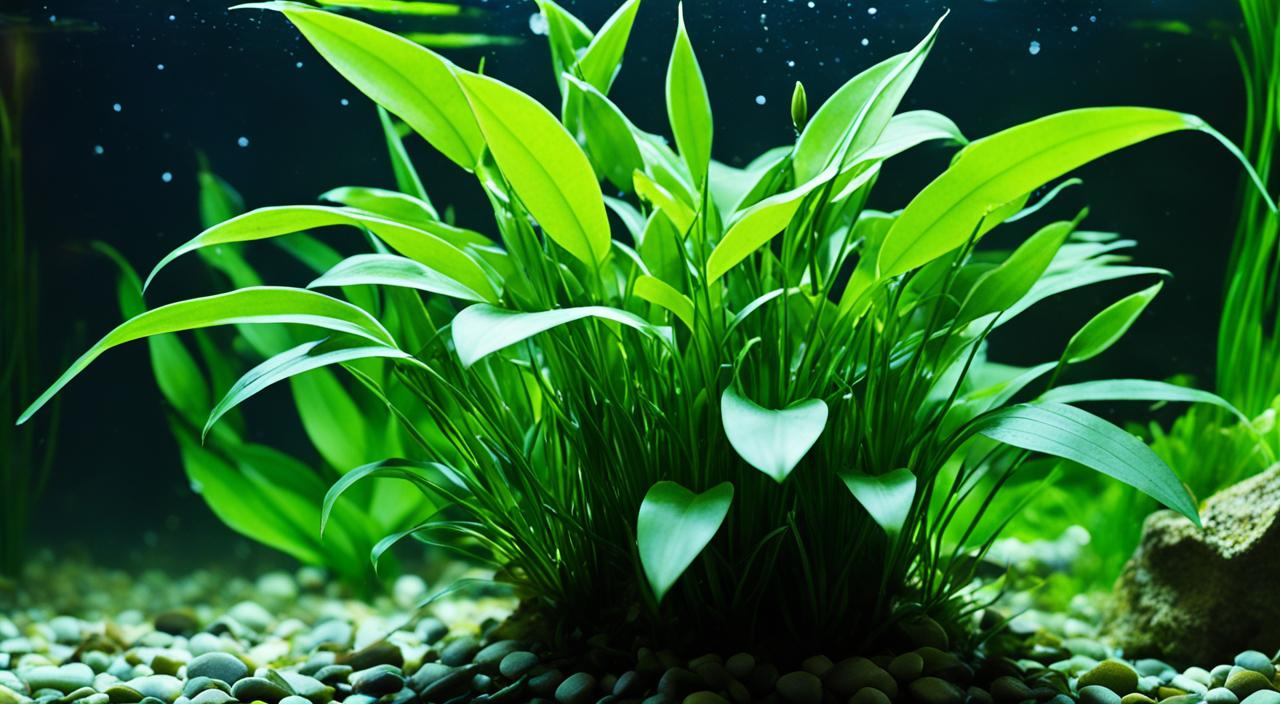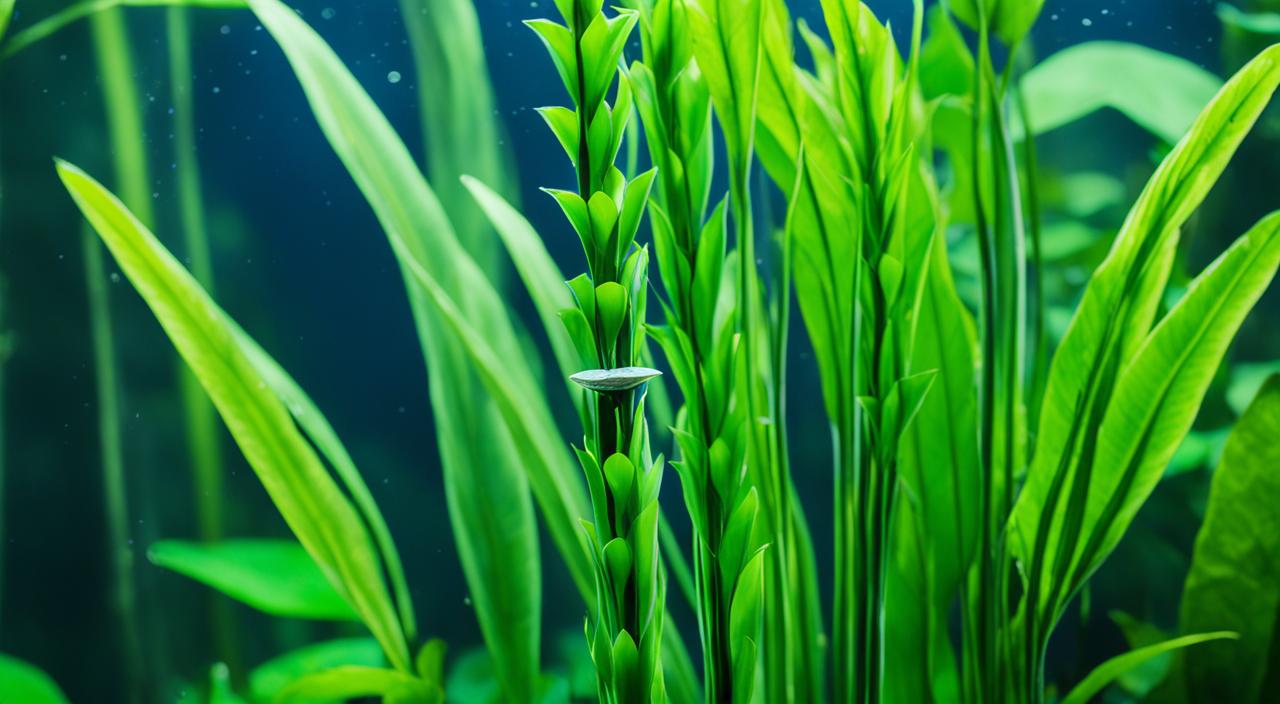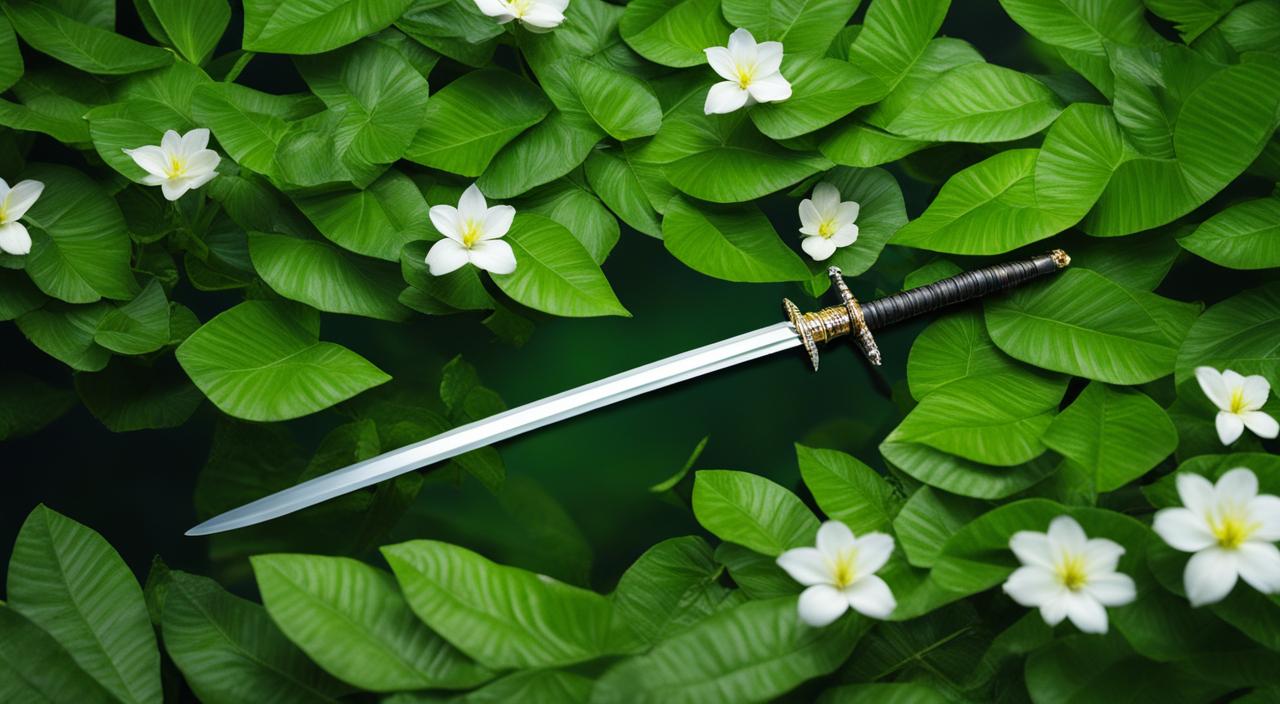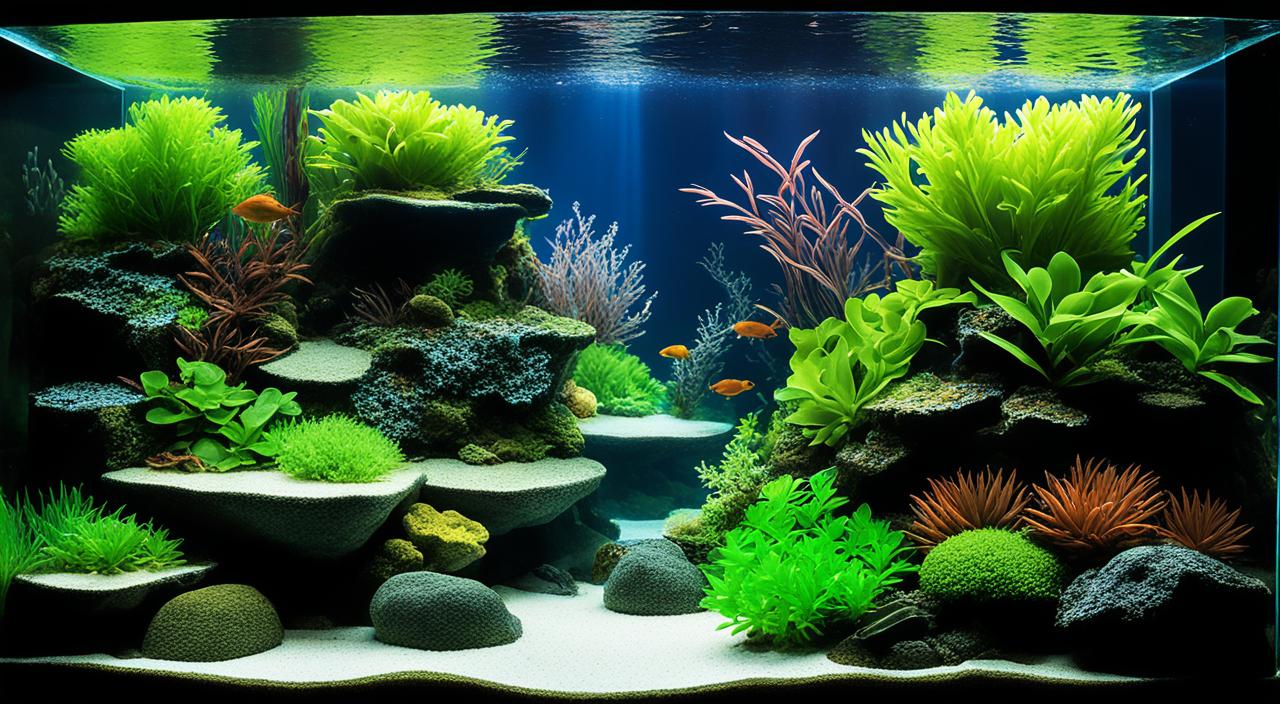Welcome to my comprehensive guide on Cryptocoryne Parva, a popular freshwater ground cover plant for aquariums. As an avid aquarist, I have found Cryptocoryne Parva to be visually appealing and relatively easy to care for, making it an excellent choice for both beginners and experienced hobbyists.
Cryptocoryne Parva is a small and slow-growing plant species that can create a lush and natural-looking foreground or midground in your aquarium. Its grass-like green leaves give a beautiful touch to any aquascape. In this article, I will provide all the information you need to care for and maintain Cryptocoryne Parva successfully in your aquatic oasis.
To start, let’s take a closer look at the origins and habitat of Cryptocoryne Parva. Understanding its natural environment will help us replicate the ideal conditions in our aquariums, ensuring the plant’s optimal growth and health.
Key Takeaways:
- Cryptocoryne Parva is a small and slow-growing plant commonly used as a freshwater ground cover in aquariums.
- It is an easy-to-care-for plant, making it suitable for beginners in the hobby.
- Cryptocoryne Parva originates from Sri Lanka and thrives in shallow, slow-moving water.
- It prefers low to medium light conditions and can be placed in the foreground or midground of the aquarium.
- When selecting tank mates, consider small, peaceful fish species that won’t disrupt the plant or its roots.
Brief Overview Of Cryptocoryne Parva
Cryptocoryne Parva is famous for aquarium enthusiasts looking to create a lush ground cover in their tanks. It is a low-light plant that can thrive in various aquatic environments. With its slow growth rate and small size, it is well-suited for nano tanks or as a foreground plant in larger setups. It requires minimal maintenance and is known for its ability to create a natural and aesthetic appeal in the aquarium.
Cryptocoryne Parva Information Table:
| Characteristic | Description |
|---|---|
| Scientific Name: | Cryptocoryne Parva |
| Common Names: | Dwarf Crypt, Mini Crypt |
| Origin: | Sri Lanka |
| Height: | 2-10 cm |
| Growth Rate: | Slow |
| Colour: | Green, occasionally with a bronze hue |
| Aquarium Placement: | Foreground |
| Water Type: | Freshwater |
| pH: | 5.5 – 7.5 |
| Care Level: | Easy to Moderate |
| Light Requirements: | Low to Medium. Ideal LUX: 2000-4000, PAR: 10-30 µmol/m²/s, Kelvin: 5000-7000K for optimal growth. |
| CO2 Requirements: | Not necessary but beneficial for growth |
| Temperature: | 20-28°C (68-82°F) |
| Flow Rate: | Low to Moderate |
| Propagation: | Runners or splitting the rootstock |
| Feed Type: | Root tabs or liquid fertilizers, especially those rich in iron and potassium |
The light requirements for Cryptocoryne Parva are pretty adaptable, but for optimal growth, a LUX range of 2000-4000 is suitable, with a PAR value of 10-30 µmol/m²/s. The Kelvin scale for the light should ideally be between 5000-7000K to mimic natural daylight conditions, promoting healthy growth and maintaining the leaves’ vibrant green colouration.
Origins And Habitat
Cryptocoryne Parva is native to Sri Lanka and grows in the shallow, slow-moving water of streams and marshes. It is often found growing on the margins of water bodies, forming dense colonies. Its natural habitat experiences a humid and warm climate, which should be replicated in the aquarium to ensure its optimal growth and health.
Morphological Characteristics
Cryptocoryne Parva is known for its small size and grass-like appearance. It has narrow, lance-shaped green leaves that can grow up to 4 inches in height. The plant develops a root system called a rhizome, which anchors it to the substrate. The leaves are often slightly translucent and can develop a reddish colouration under high-light conditions. Understanding its physical characteristics is essential for proper identification and care.
Placement And Lighting
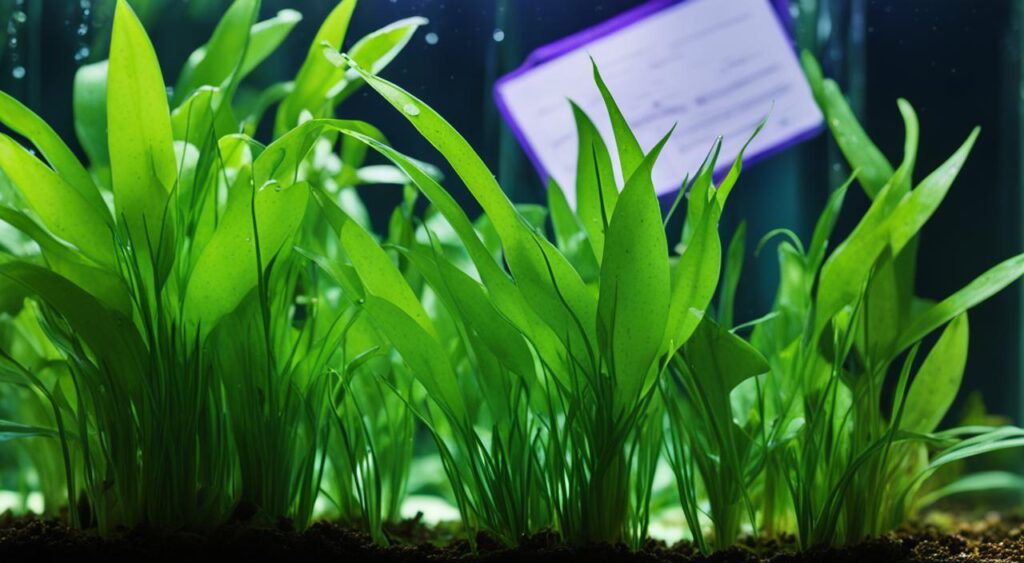
Cryptocoryne Parva, a low-light plant, thrives in low to medium-light conditions. To showcase its grass-like appearance, placing the plant in the foreground or midground of the aquarium is recommended.
Providing adequate lighting is crucial for the plant’s photosynthesis and overall growth. LED lights or fluorescent bulbs with a colour temperature of around 6500K are suitable for Cryptocoryne Parva. These light sources emit a balanced spectrum that promotes healthy plant development.
It is essential to avoid placing the plant directly under intense lighting, as it can lead to algae growth and leaf burn. Instead, position the light source slightly above the plant, ensuring it receives enough light without causing any damage.
What Are Good Tank Mates?
Cryptocoryne Parva is a peaceful plant that can coexist well with various fish and invertebrates. Some suitable tank mates include small community fish like tetras, rasboras, and guppies. These fish species typically do not disturb or uproot the plant’s fragile roots from the substrate. They also complement the natural and aesthetic appeal of Cryptocoryne Parva, creating a harmonious underwater environment.
Avoid keeping large, aggressive fish or those known to uproot plants, as they can damage the Cryptocoryne Parva and disrupt its growth. Examples of fish species to avoid include goldfish and cichlids. Goldfish are notorious for their destructive foraging behaviour and may consume or damage the leaves of Cryptocoryne Parva. Cichlids, on the other hand, are known for their territorial nature and inclination to uproot plants.
Choosing compatible tank mates is crucial to ensure the well-being of Cryptocoryne Parva. Consider potential tank mates’ behaviour, size, and habitat requirements to create a harmonious and balanced aquatic ecosystem.
Good Tank Mates
- Tetras
- Rasboras
- Guppies
Fish Species To Avoid
- Goldfish
- Cichlids
Feeding (Fertilization)
Cryptocoryne Parva is a root-feeding plant that obtains nutrients primarily through its roots. While it can derive some nutrients from the water column, a nutrient-rich substrate is essential for optimal growth. To ensure that your Cryptocoryne Parva receives the necessary nutrients, consider adding root tabs or a substrate fertilizer specifically designed for aquatic plants.
When using fertilizers, following the dosage recommendations on the package is essential. Overfeeding can lead to algae growth and nutrient imbalances in the aquarium, which can negatively impact the health of your plants and other aquatic species.
To maintain a healthy balance, feed your Cryptocoryne Parva in moderation. Remember that each tank is unique, and the feeding requirements may vary based on factors such as the size of the tank, the number of plants, and the presence of other plants and livestock.
Monitor the growth and appearance of your Cryptocoryne Parva to assess its feeding needs. Healthy plants typically exhibit vibrant green colouration, lush growth, and robust root development.
Remember, providing the right amount of nutrients is crucial for the well-being of your Cryptocoryne Parva, but overfeeding can have detrimental effects. Striking the right balance will help ensure your plant’s continued health and vitality.
| Feeding Tips for Cryptocoryne Parva |
|---|
| Avoid overfeeding to prevent nutrient imbalances and algae growth. |
| Follow the dosage recommendations on the fertilizer package. |
| Monitor the growth and appearance of your Cryptocoryne Parva to assess its feeding needs. |
| Provide a nutrient-rich substrate or use root tabs to supplement the plant’s nutrition. |
| Consider the size of your tank, the number of plants, and the presence of other plants and livestock when determining the feeding requirements. |
CO2 Injection
While Cryptocoryne Parva can thrive without CO2 injection, providing a controlled source of CO2 can enhance its growth and development. There are different methods of CO2 injection available, including DIY yeast setups, compressed CO2 systems, and liquid carbon supplements. Consider the size of your tank, the needs of other plants, and your budget when deciding on the most suitable CO2 injection method for your aquarium.
Care
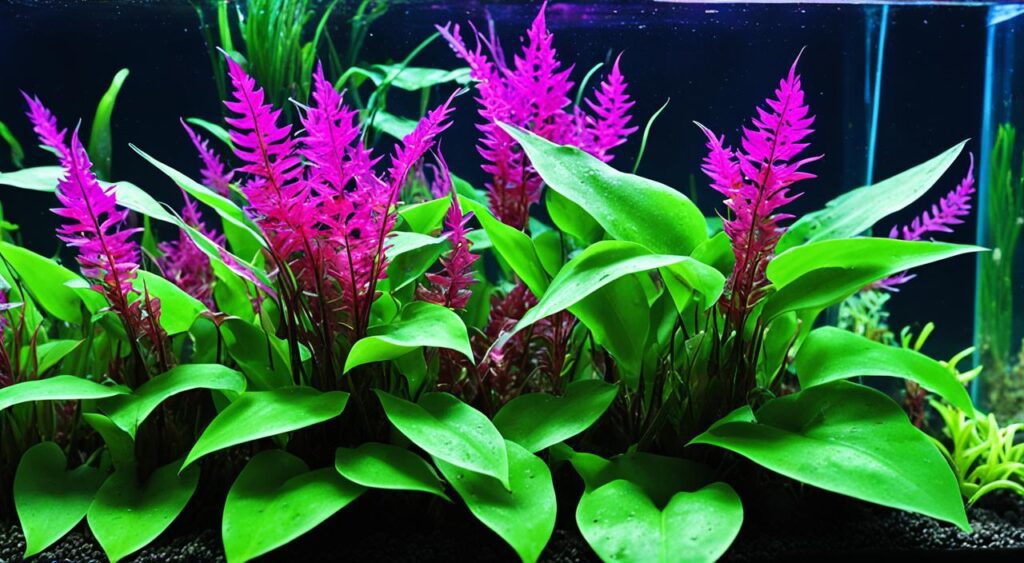
Planted Tank Parameters
Proper care is essential to ensure the health and vitality of Cryptocoryne Parva in your aquarium. One of the key aspects of care is maintaining appropriate planted tank parameters. These parameters include:
- pH range: 6-7.5
- Water temperature: 72-82°F
Water Quality
In addition to maintaining specific parameters, ensuring the overall water quality in your aquarium is crucial. Clean, high-quality water is essential for the well-being of Cryptocoryne Parva. Regular water changes and monitoring of water quality parameters are necessary to keep the plant healthy. Here are some key points to consider:
- Regular water changes: Aim for a 10-20% water change every 1-2 weeks to remove accumulated pollutants and maintain water quality.
- Test water parameters: Use appropriate testing kits to regularly monitor ammonia, nitrite, nitrate, and phosphate levels. Adjust these parameters as needed to maintain optimal water quality.
Filtration
A high-quality filtration system is crucial for maintaining clean and debris-free water. An efficient filtration setup will remove waste, excess nutrients, and particles that can affect water quality. Ensure that your filtration system is appropriately sized for your aquarium and provides adequate mechanical and biological filtration.
Flow
Adequate water flow is essential in an aquarium to distribute nutrients evenly and prevent stagnant areas. It helps deliver oxygen to the plants and encourages healthy growth. Consider the following tips to achieve optimal flow:
- Positioning of the filter outlet: Place the filter outlet in a way that promotes water movement throughout the tank, ensuring all areas receive sufficient flow.
- Utilize a circulation pump: If needed, use a circulation pump to enhance water movement and prevent stagnation in specific areas.
Aquarium Maintenance
Regular aquarium maintenance is crucial for the long-term success of Cryptocoryne Parva. Taking care of your aquarium and ensuring a suitable environment for the plant will promote its growth and overall health. This section will provide essential tips on testing water conditions, setting up your aquarium tank, and propagation methods for Cryptocoryne Parva.
Testing Water Conditions
It is essential to test the water conditions regularly to ensure that the parameters are within the appropriate range for the well-being of Cryptocoryne Parva. Testing the pH, ammonia, nitrate, and phosphate levels will help you monitor the water quality and make any necessary adjustments. Maintaining stable water conditions provides a healthy environment for the plant’s growth.
How To Set Up Your Aquarium Tank
When setting up your aquarium tank for Cryptocoryne Parva, consider the equipment, substrate, and plants to create an ideal habitat. Choose a suitable aquarium size, filtration system, and lighting to support the plant’s growth. Use an appropriate substrate, such as nutrient-rich aquarium soil or gravel, to provide essential nutrients for the plant. Position the plants strategically, considering the desired aesthetic and growth pattern.
Propagation Methods
Propagation is an essential aspect of maintaining Cryptocoryne Parva in your aquarium. There are two standard propagation methods for this plant:
- Separating the Plant’s Rhizome: Gently separate the rhizome from the parent plant using clean scissors or your hands. Ensure that each separated section has some roots attached. Replant the separated rhizomes in another location in your tank, taking care to bury the roots, but not the rhizome, in the substrate.
- Planting Daughter Plants (Adventitious Shoots): Cryptocoryne Parva produces small daughter plants called adventitious shoots. These can be carefully removed from the parent plant and replanted in the desired location. Ensure that each adventitious shoot has some roots attached and bury them in the substrate.
Regular pruning is also essential to maintain the plant’s overall health. Remove any dead or decaying leaves to prevent nutrient imbalances and maintain a clean appearance in your tank.
Health And Disease
Cryptocoryne Parva is generally a hardy plant, but specific health issues can arise if care is not provided correctly. Monitoring the plant’s health regularly and taking appropriate measures to address any signs of distress is crucial. Proper knowledge of the signs of good health, signs of poor health, joint health issues, and plant pests can help ensure the well-being of Cryptocoryne Parva in your aquarium.
Signs Of Good Health
Signs of good health include:
- Vibrant green coloration
- New leaf growth
- Strong root development
Signs Of Poor Health
Signs of poor health may include:
- Yellowing leaves
- Leaf melting
- Stunted growth
Common Health Issues And Treatment
Cryptocoryne Parva can be susceptible to common health issues such as:
| Health Issue | Treatment |
|---|---|
| Nutrient deficiencies | Adjust water parameters and provide proper nutrition through fertilizers or supplemental root tabs. |
| Algae infestations | Control lighting duration, maintain nutrient balance, and consider adding algae-eating species to the tank. |
| Fungal infections | Treat with appropriate antifungal medications and remove affected plant parts. |
Plant Pests
Like any other aquarium plant, Cryptocoryne Parva can be susceptible to plant pests such as snails, algae, and other invertebrates. Regularly inspect the plant for any signs of infestation and take necessary measures to control and prevent further damage to the plant and the aquarium ecosystem.
Summary
Cryptocoryne Parva is a versatile and visually appealing plant that adds a lush ground cover to freshwater aquariums. Its small size, slow growth rate, and low-light requirements make it an ideal choice for aquarists of all skill levels.
To ensure the successful growth and longevity of Cryptocoryne Parva in your aquarium, it is essential to understand its origins, morphological characteristics, and placement and lighting needs. Providing suitable tank mates, proper feeding, CO2 injection options, and maintaining care parameters are also essential.
Regular aquarium maintenance and monitoring of water quality parameters are crucial for the plant’s health. It is essential to promptly address any potential health issues to prevent further complications.
By providing the necessary care, maintaining stable water parameters, and addressing any potential health issues promptly, you can enjoy the beauty of Cryptocoryne Parva as it thrives in your aquatic oasis.
FAQ
What is Cryptocoryne Parva?
Cryptocoryne Parva is a small and slow-growing plant species commonly used as a foreground and midground plant in freshwater aquariums.
What are the origins and habitat of Cryptocoryne Parva?
Cryptocoryne Parva is native to Sri Lanka, where it grows in the shallow, slow-moving water of streams and marshes. It forms dense colonies on the margins of water bodies.
What are the morphological characteristics of Cryptocoryne Parva?
Cryptocoryne Parva has narrow, lance-shaped green leaves that can reach a height of 4 inches. It develops a rhizome root system and can exhibit a reddish coloration under high light conditions.
Where should I place Cryptocoryne Parva and what lighting does it require?
Cryptocoryne Parva is best placed in the foreground or midground of the aquarium. It thrives in low to medium light conditions and requires LED lights or fluorescent bulbs with a color temperature of around 6500K.
What are good tank mates for Cryptocoryne Parva?
Good tank mates for Cryptocoryne Parva include small community fish like tetras, rasboras, and guppies. It is important to avoid keeping large, aggressive fish or those known to uproot plants.
How do I feed Cryptocoryne Parva?
Cryptocoryne Parva is a root-feeding plant that obtains nutrients primarily through its roots. A nutrient-rich substrate or the addition of root tabs and substrate fertilizer is essential for its growth.
Does Cryptocoryne Parva require CO2 injection?
Cryptocoryne Parva can thrive without CO2 injection, but providing a controlled source of CO2 can enhance its growth and development.
What care parameters are important for Cryptocoryne Parva?
Maintain stable water parameters with a pH range of 6-7.5 and a temperature between 72-82°F. Adequate filtration, water flow, and monitoring of water quality are important for its well-being.
How do I maintain my aquarium with Cryptocoryne Parva?
Regular testing of water conditions, proper aquarium setup, propagation through separating the rhizome or planting daughter plants, and regular pruning and removal of dead leaves are essential for its maintenance.
What health issues can Cryptocoryne Parva face?
Signs of good health include vibrant green coloration, new leaf growth, and strong root development. Poor health signs may include yellowing leaves, leaf melting, or stunted growth. Common health issues include nutrient deficiencies, algae infestations, and fungal infections.
What is a summary of the care and maintenance of Cryptocoryne Parva?
Cryptocoryne Parva is a versatile and visually appealing plant that adds a lush ground cover to freshwater aquariums. It requires low to medium light, good tank mates, and proper care parameters. Regular maintenance, propagation, and monitoring of health and diseases are important for its successful growth and longevity.

